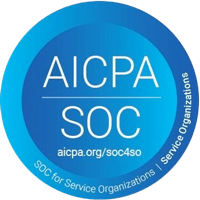Seven Ways to Improve Your Skilled Nursing Orientation
So what does your skilled nursing orientation program look like now? And how can it be improved?
Employee orientation is dedicated time for new hires to learn their duties, get familiar with their facilities, and connect with coworkers. In a complex and high-stakes industry like skilled nursing, orientation can help staff members feel prepared and understand what’s expected of them. In turn, this will help improve retention and prevent further staff shortages.
We explore seven ways to create the most effective skilled nursing orientation and onboarding program.

In This Series
- Staffing Guide for Skilled Nursing Facilities
- Seven Ways to Improve Your Skilled Nursing Orientation
- Nursing Home Hiring: Tips for Recruiting 7 Common Roles
- Healthcare Terminology for Skilled Nursing HR
- Skilled Nursing Retention: 10 Tips for Reducing Turnover
- Skilled Nursing Compliance Q&A with Healthcare Law Attorneys

FREE INTERACTIVE ONBOARDING CHECKLIST
Specifically designed for Skilled Nursing Facility Roles
Onboarding and Orientation: What’s the Difference?
Orientation and onboarding are often used interchangeably, but there are important differences to note. Onboarding is a long process by which an employee becomes fully familiar with their role. It usually lasts a few months, though some companies may extend it to a year.
Orientation, on the other hand, is a part of the onboarding process. Orientation is the period when employees complete whatever paperwork and training materials they needed to begin working at all.
Both onboarding and orientation are necessary for any job, but they take on special importance in businesses that are facing staffing shortages—like skilled nursing facilities. It’s more important than ever that they see themselves at your facility long term— and onboarding is crucial in making that first impression.
1. Use Digital Paperwork
If your ideal candidates aren’t aware of your positions, there’s no way to move the hiring process along. Distributing jobs widely can help you connect with a larger potential pool of hires. When you have a steady flow of qualified candidates in your hiring pipeline, recruitment moves faster.
DID YOU KNOW?
1 in 5 candidates have ghosted an employer on their first day. Digital onboarding can help you avoid this nightmare scenario.
2. Tie in Your Mission and Culture
In a skilled nursing facility, a healthy, vibrant culture can attract both residents and employees. In fact, one study showed that employees who decide to leave their positions consider toxic culture to be ten times more important than compensation.
The best way to improve your company culture? Decide on core values and a mission statement. Incorporate these missions via employee recognition, feedback and communication styles, and work-life balance. A mission statement is only meaningful if your employees see those values reflected in their daily lives. A strong sense of purpose can be something employees return to when the job gets hard. Check out more tips for improving company culture.
3. Create a Library of Orientation Materials
You already know that the skilled nursing facility ecosystem is made up of doctors and nurses, CNAs and administrators, physical and occupational therapists, and many more. Onboarding for each position is easier said than done.
Make use of powerpoint and other templates to help you change and adapt your resources without starting from scratch every time you hire a new employee. Consider having templates for the following.
- Paperwork checklists
- Powerpoints and other presentations used in onboarding
- Compliance guidelines relevant to each role
- Calendar of events
- Lists of pertinent resources, such as further training
FREE INTERACTIVE ONBOARDING CHECKLIST
Make sure your new hires are on track: specifically designed for Skilled Nursing Facility roles
4. Comply Now, Save Money Later
In 2020, CMS fined a group of skilled nursing facilities 15 million dollars for noncompliance issues. With increased regulation after the pandemic, audits can cost nursing homes big. These costs could increase further when minimum staffing ratios change.
Audits can cover everything from staffing ratios to licensing to infection protocols. Your skilled nursing orientation is a great place to make sure your employees know their role in compliance. Take time to cover compliance during an employee’s first few days, instead of waiting for something to go wrong.

5. Create a Mentorship System
Pairing your new employees with a mentor can make the orientation and onboarding process less daunting. Employees can turn to their mentors to ask questions and confirm protocol as they move through onboarding.
Just be sure that mentors are enthusiastic about helping new hires—not everyone will enjoy or be suited to the responsibilities of being a mentor. If you’re onboarding multiple employees at once, creating a peer buddy system can also be helpful.
DID YOU KNOW?
Work friendships might be more important than you think. In fact, 70% of employees say friendships are key to a satisfying working life. Another way to cultivate healthy working relationships? Use employee referrals. Candidates recommended by current employees have already been vetted for a cultural fit.
6. Give Your New Hire Goals
Without goalposts, your new hires may have a difficult time understanding if they’re on the right track. This can make an already busy job feel overwhelming.
Consider a 30/60/90 goal plan to help clarify the onboarding process, with clearly laid out expectations of your employees at thirty days, sixty days, and ninety days. Be sure to introduce these goals at orientation, so employees know early what’s expected of them.
DID YOU KNOW?
Onboarding affects retention. One study found that employees who experience excellent onboarding are almost 70% more likely to remain with the same company for three years.

7. Make All Training Materials Accessible After Orientation
We all absorb information differently. Some of your employees may need to return to your orientation materials a few times before retaining it.
Make things easier for your employees by sending them the onboarding materials after orientation is complete.
Finally, remember to follow up after their ninety days have elapsed, to see what questions may have arisen during their first few months on the job.
How many of these steps do you currently follow? Check off your progress with our downloadable onboarding checklist.
Better Hiring With Apploi
No matter how many healthcare roles you’re hiring for, you’ll be able to easily manage records, credentials, and licenses with Apploi. With these administrative tasks out of the way, you can focus on the larger questions of improving your onboarding and engagement at your skilled nursing facility.
Interested in learning more about how you can recruit, hire, and onboard healthcare staff quickly? Contact us today for a free demo of our software solution.
In This Series
- Staffing Guide for Skilled Nursing Facilities
- Seven Ways to Improve Your Skilled Nursing Orientation
- Nursing Home Hiring: Tips for Recruiting 7 Common Roles
- Healthcare Terminology for Skilled Nursing HR
- Skilled Nursing Retention: 10 Tips for Reducing Turnover
- Skilled Nursing Compliance Q&A with Healthcare Law Attorneys

